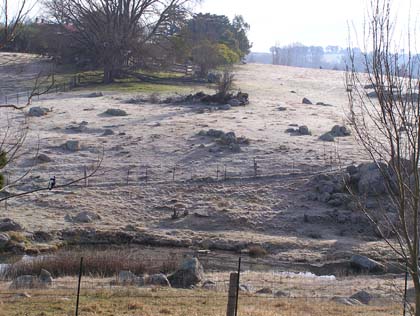Warning: Spoiler alert for those who haven’t seen ‘The Way We Were’
Do you like to watch the bonus features on a DVD? I know I do, especially the deleted scenes. Sometimes it’s obvious why the director decided to cut a particular scene. It might have been repetitive or superfluous, or perhaps it slowed the pace of the film or went off at an odd tangent. Maybe it was just dull or ponderous or self-indulgent.
But there are times when you really wish the deleted scene had remained in place. Case in point – ‘The Way We Were’. The decision that Hubbell makes towards the end of the film to leave a pregnant Katy and go back to New York just didn’t make sense to me, no matter how many times I watched that film. I used to wonder if I’d missed something. Then I watched the special edition DVD with its collection of deleted scenes and discovered there had indeed been an explanatory scene between Hubbell and Katy but director Sydney Pollack had decided to remove it from the final cut. Without that crucial scene, the resolution is confusing to say the least.
Another example from the bonus features of ‘The Way We Were’ is a bittersweet moment when Katy returns to college in the 1950s and meets a girl who reminds her of herself back in the ’30s. Apparently it was Streisand’s favourite scene and I can see why – it’s poignant and very well-acted. All the same, it ended up on the cutting room floor. I agree with Pollack on this one – there are plenty of those nostalgic moments in ‘The Way We Were’. This scene just didn’t add anything to a movie which is on the long side anyway.
So how do things work with books? It’s much the same - there will always be cuts, and these will happen at various stages during the evolution of the project. In my case, the major pruning occurs after I’ve completed the first draft. This is when I put my red editing pen to work, crossing out sentences, paragraphs and even pages. The criteria I apply to the cutting process are much the same as those mentioned above. It can be cathartic, even exhilarating to remove the dead wood. However, when the pruning involves ‘killing your darlings’, it’s quite the opposite. This phrase was coined by the iconic American novelist William Faulkner of ‘Sound and Fury’ fame (who also coincidentally wrote screenplays for Hollywood). He was referring to deleting your favourite pieces of text – this might involve a paragraph, a scene or even a chapter. In a more literal sense, it could even refer to expunging a favourite character.
Now I’m going to let you into a secret. To lessen the pain, I have a habit of saving the deleted text to a ‘Cutting Room Floor’ file, which means I don’t actually kill my darlings – I just deactivate them. In the back of my mind there’s always the comforting thought that I can bring them out of suspended animation, if and when they’re needed. But does it ever actually happen? Rarely.
Here’s an example of a deleted ‘scene’ from ‘Mr Chen’s Emporium’. It wasn’t just any scene but the preface to the book, the introduction to my dual narrative. I thought long and hard about cutting it. I like prefaces. I even wrote one for ‘The Jade Widow’.
In the example below, the writing is acceptable and the text fits neatly on a single page. There’s a weather metaphor which might be a problem (in terms of being simplistic, trite, hackneyed, etc) except that it’s deeply personal – both for me and my female protagonists. We all hate the frost.
On the downside, the preface is quite abstract and airy-fairy. We don’t learn anything concrete about the story. And if the primary role of a preface is to entice the reader to delve further into the book, does this piece of writing succeed in doing that? In the end I followed the old adage: ‘If in doubt, cut it out’. Was I right? What do you think?
PREFACE
Change can creep up on you, silent and invisible, like the first frost of the season. If it’s mild, it will sit briefly on your surface and melt away with the morning sun - you may not even notice it at all. When it’s moderate, you might wilt for a while and recover later in the day.
A severe frost can burn you around the edges. Sometimes your leaves will turn brown and fall to the ground, leaving you bare and exposed. But sooner or later, new growth will appear, stronger and hardier than before. And in the end you will become acclimatised to the frost, so much so that you can meet it with acceptance rather than fear.
Change can be a gentle unfurling, so subtle you don’t see it happening. And it might even bring renewal when you thought there was none.
 Deborah O’Brien
Deborah O’Brien
September 9, 2014
